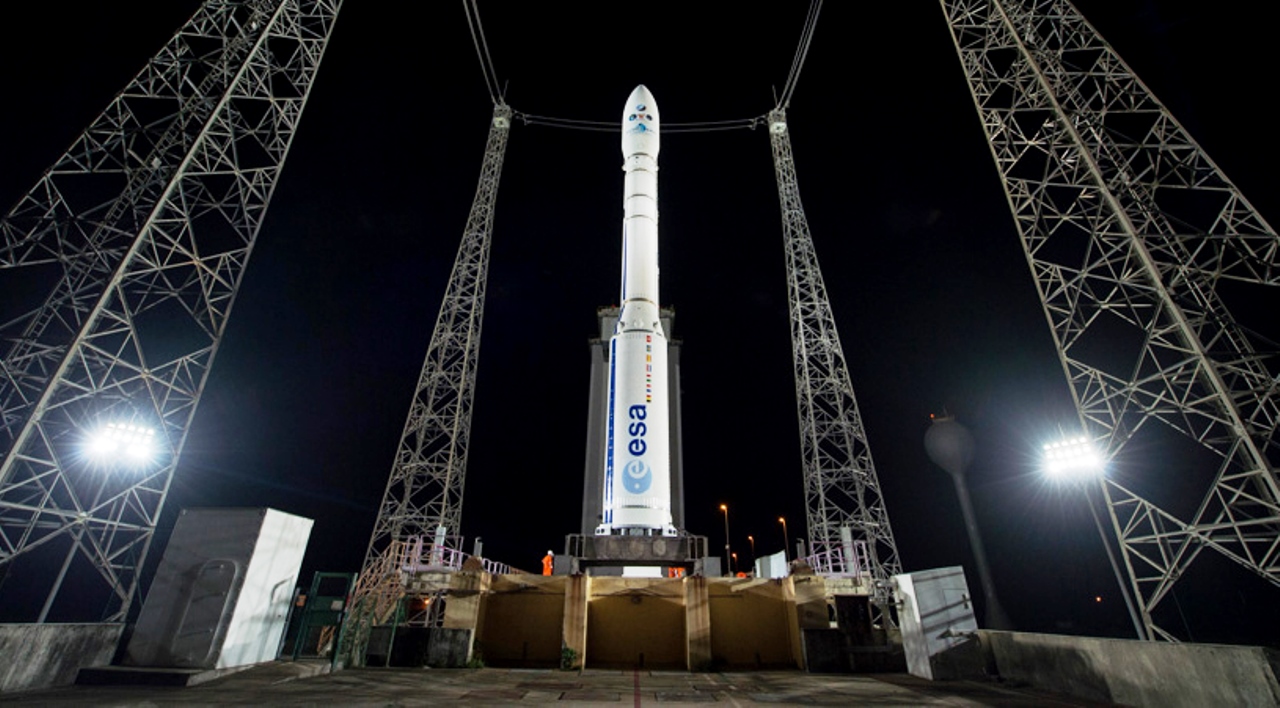Vega C VV22 Nozzle ‘Over-erosion’ led to failure
3rd Mar 2023
An investigation into the Vega C VV22 mission that failed in December 2022 has found a nozzle in its second stage was the “root cause” of the anomaly. The nozzle is used to accelerate hot exhaust to produce thrust during lift-off, but the carbon-carbon (C-C) throat insert of the nozzle eroded too much during the second stage fire, and caused the mission to end prematurely.
The independent investigation, set up by Arianespace and the European Space Agency (ESA) immediately after the event, revealed the rocket will not return to flight until the end of 2023.
The failure
Arianespace’s Vega C rocket, the upgraded Vega vehicle able to deploy CubeSat’s and large payloads, launched on 21st December 2022, part of the VV22 mission. After lifting off from the French Guiana spaceport at 10:47pm local time and following through first stage separation, a decrease in pressure during the second stage fire led to a “premature end of the mission”, Arianespace said.
The two Earth Observation payloads, Pléiades Neo 5 and 6, developed by Airbus Defence and Space, were destroyed.
VV22 investigation
Immediately, an investigation began. Initial data pointed to a “gradual deterioration” of the Zefiro 40’s (second stage motor) nozzle. Later investigations confirmed an “unexpected thermos-mechanical over-erosion” of the C-C throat insert of the nozzle. Additional information led to the conclusion that this happened due to a flaw in the quality of the C-C material, ESA said.
In a briefing about the investigation, Pierre-Yves Tissier, chief technical officer at Arianespace, said about a minute after the second stage ignited, acceleration of the vehicle became “quasi-null” and pushed the rocket towards a ballistic trajectory.
Further, investigations found that the throat insert was not up to standard and was not flightworthy, meaning it can no longer be used in future launches. However, Tissier explained in the briefing that “the acceptance criteria established for this material were not able to detect such a weakness”. However, no issues in the Zefiro 40 were found, and ArianeGroup will replace existing nozzles with another one used in Vega’s Zefiro 23 and Zefiro 9 nozzles.
The insert of the nozzle was procured by propulsion company Avio from Ukraine. The company has confirmed that the invasion from Russia had no impact on the product, as it was manufactured before then.
Vega C won’t return for a while
In response to the findings of the investigation, Arianespace has reassigned certain missions to one of its two remaining Vega launchers, however, the Vega C won’t return until the end of 2023. ESA and Arianespace working through several changes recommended by the investigation, including additional testing of the alternative C-C material, an additional qualification phase of the Zefiro 40 engine with the new material, and actions to guarantee a “long-term, reliable and sustainable” rocket production, ESA said.
“Restoring Europe’s independent access to space is ESA’s priority, and I am therefore glad that we can proceed with Vega launch campaigns while preparing Vega-C to safely return to flight,” ESA Director General Josef Aschbacher said.
“ESA will fully engage its engineering and project management expertise to support Avio in the implementation of actions required to regain confidence in the launcher system. Restoring Europe’s independent access to space is ESA’s priority, and I am therefore glad that we can proceed with Vega launch campaigns while preparing Vega-C to safely return to flight.”





Thank you for your comment! It will be visible on the site after moderation.